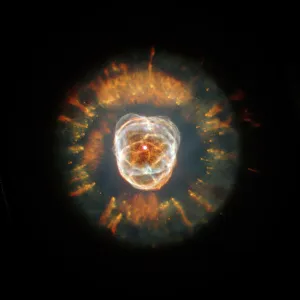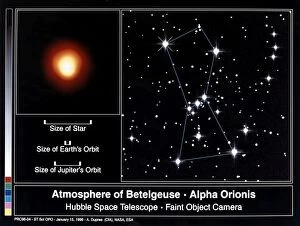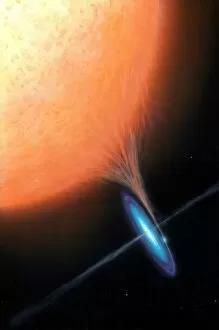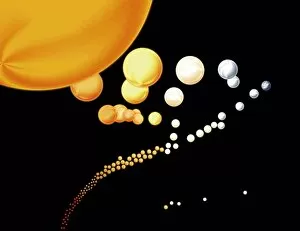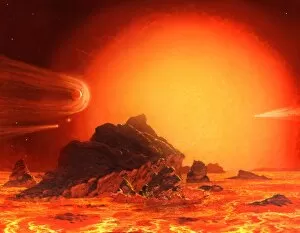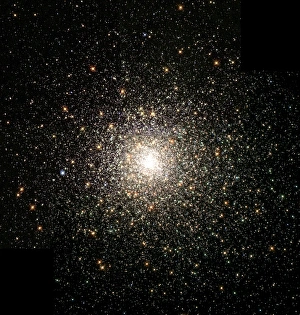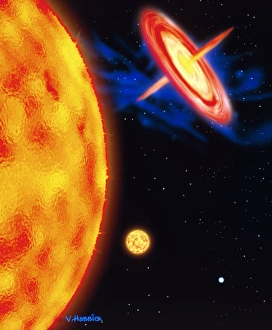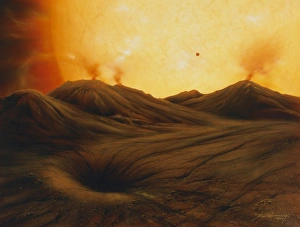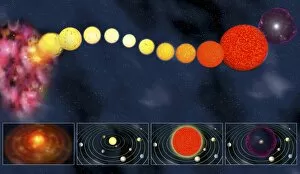Red Giant Collection
"Hubble Reopens Eye on the Universe: Exploring the Enigmatic Red Giants" In a mesmerizing digital illustration
All Professionally Made to Order for Quick Shipping
"Hubble Reopens Eye on the Universe: Exploring the Enigmatic Red Giants" In a mesmerizing digital illustration, the Hubble Space Telescope unveils the captivating beauty of a red giant star. Reminiscent of an artist's brushstroke, this celestial marvel showcases its vibrant hues and immense size. One such red supergiant, Betelgeuse, is immortalized in an ultraviolet photograph captured by NASA's Faint Object Camera. Positioned as Orion's left shoulder, it stands out against the backdrop of constellations. A scale comparison reveals its colossal dimensions dwarfing Earth and Jupiter's orbits. As we ponder our own Sun's fate, envisioning it transforming into a red giant in the distant future becomes awe-inspiring. This fiery transformation promises to engulf inner planets while expanding dramatically in size – a breathtaking spectacle that awaits us eons from now. Delving further into cosmic wonders, X-ray binary systems captivate with their intricate dance between two celestial bodies. Through stunning artwork, we witness these enigmatic duos emitting powerful X-rays as they orbit each other amidst vast expanses of space. Peering even deeper into tomorrow’s possibilities, artists imagine Europa – one of Jupiter’s moons – transformed under the influence of a future red giant Sun. The resulting artwork portrays an ethereal landscape where icy terrains meet warm hues evoking both mystery and wonder. Exploring various star types through vivid illustrations allows us to appreciate their diversity and complexity. From blue giants to yellow dwarfs and pulsating variable stars like RX Lepus - each has its unique story etched across time and space for us to unravel. Finally, within globular cluster M80 lies another treasure trove of ancient stars tightly bound together by gravity’s embrace. These stellar communities offer glimpses into our universe’s past while igniting curiosity about what secrets they hold within their luminous cores. The realm of red giants beckons humanity to explore the mysteries of our universe.

